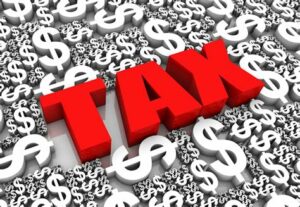What is the Dividend Capture Strategy?
The Dividend Capture Strategy is an investment technique where an investor buys shares of a company before its ex-dividend date and then sells the shares shortly after receiving the dividend payout. The goal is to capture the dividend income while minimizing the risk associated with owning the stock for an extended period.
In general, a company pays out dividends to its shareholders as a way to distribute its profits. When a company declares a dividend, it also sets an ex-dividend date, which is typically a few days before the dividend payment date. Investors who own shares of the company before the ex-dividend date are entitled to receive the dividend payment.
The Dividend Capture Strategy involves buying shares of a company before the ex-dividend date and then selling them shortly after the dividend is paid. This allows the investor to collect the dividend payout while avoiding any significant price changes in the stock that might occur after the ex-dividend date.
However, it’s worth noting that this strategy is not foolproof, and there are risks involved. For example, the price of the stock may drop by an amount equal to the dividend payout after the ex-dividend date, effectively negating any gains from the dividend. Additionally, if the investor holds the stock for too long after the ex-dividend date, they may miss out on other investment opportunities that may arise.
How long does it take a stock to recover its price after it pays a dividend?
The length of time it takes a stock to recover its price after it pays a dividend can vary depending on several factors, such as the overall market conditions, the company’s financial performance, and investor sentiment.
In some cases, the stock price may recover quickly after the ex-dividend date, especially if the company’s financial performance is strong and investors are optimistic about its future prospects. In other cases, the stock price may take longer to recover, particularly if the company’s financial performance is weak, or if there is a broader market downturn.
It’s also worth noting that the amount of the dividend payout may affect the stock price recovery time. If the dividend payout is relatively small, the stock price may recover more quickly, while a larger dividend payout may take more time for the stock price to recover.
Ultimately, predicting how long it will take a stock to recover its price after paying a dividend can be challenging, and there are no guarantees. As an investor, it’s essential to consider a range of factors when making investment decisions and to be prepared for volatility and market fluctuations.
Are dividend stocks good investments?
Dividend stocks can be good investments for some investors, depending on their investment goals, risk tolerance, and investment strategy. Here are some of the potential benefits and considerations of investing in dividend stocks:
Benefits:
- Steady income stream: Dividend stocks can provide a regular income stream for investors, especially those who are looking for a reliable source of passive income. Dividends can help to offset any capital losses and provide some stability to a portfolio.
- Potential for long-term growth: Some dividend-paying companies have a long history of increasing their dividends over time, which can lead to significant long-term growth in an investor’s portfolio.
- Defensive investment: Dividend stocks can be considered defensive investments because companies that pay consistent dividends tend to be more established, financially stable, and less volatile than companies that do not pay dividends.
Considerations:
- Lower growth potential: Dividend-paying companies may not have the same growth potential as non-dividend-paying companies because they are distributing some of their profits to shareholders rather than reinvesting them in the business.
- Vulnerability to interest rates: When interest rates rise, dividend stocks can become less attractive to investors because they provide a lower yield compared to other fixed-income investments.
- Company-specific risks: Just like any other stock investment, dividend stocks are subject to company-specific risks, such as changes in management, regulatory issues, or unexpected economic events.
Dividend stocks can be good investments for investors who prioritize income and stability in their portfolio. However, it’s important to evaluate each investment opportunity carefully, taking into account the potential benefits and risks associated with investing in dividend stocks.
How are short term dividends taxed?
Short-term dividends are taxed at the same rate as ordinary income, which is based on the investor’s individual tax bracket. In the United States, dividends are considered taxable income, and the tax rate can range from 0% to 37%, depending on the investor’s income level.
For example, let’s say an investor receives a short-term dividend of $1,000 from a stock they own. If the investor’s marginal tax rate is 24%, they would owe $240 in taxes on the dividend income.
It’s worth noting that qualified dividends, which are dividends paid by U.S. corporations that meet certain criteria, may be taxed at a lower rate. Qualified dividends are subject to long-term capital gains tax rates, which can range from 0% to 20%, depending on the investor’s income level.
Short-term dividends are taxed as ordinary income, and the tax rate depends on the investor’s individual tax bracket. It’s important for investors to keep track of their dividend income and report it accurately on their tax returns to avoid any penalties or fines.
How are short term capital gains taxed?
Short-term capital gains are taxed as ordinary income in the United States. The tax rate for short-term capital gains is based on the investor’s individual tax bracket, which can range from 0% to 37% depending on their income level.
Short-term capital gains are generated when an investor sells an asset that they have held for one year or less. For example, if an investor buys a stock and sells it for a profit within one year of purchasing it, any gains realized from the sale would be considered short-term capital gains.
The tax rate for short-term capital gains is typically higher than the tax rate for long-term capital gains, which are generated when an investor sells an asset that they have held for more than one year. Long-term capital gains are taxed at a lower rate, which can range from 0% to 20%, depending on the investor’s income level.
It’s important for investors to keep accurate records of their capital gains and losses and report them accurately on their tax returns. Failing to report capital gains can result in penalties and interest charges. Additionally, investors should consult with a tax professional or financial advisor to understand their individual tax situation and to develop a tax-efficient investment strategy.


